TAO ComBalloon – Mobile Aerostat System for Telecommunication, surveillance and data transfer
The TAO ComBalloon is an innovative mobile or stationary lighter than air aerostat system designed for reliable data transmission. Whether for end to end telecommunication, surveillance, event connectivity, or disaster response, this tethered helium-filled lighter than air unit is capable of easy and rapid deployment to provide antennae, cameras and environmental sensor capability.
With line-of-sight ranges of up to 20 km (at 50 m tether altitude) and flexible deployment options, the ComBalloon is the cost-effective alternative to fixed antenna masts or complex tower installations for short to medium term use.
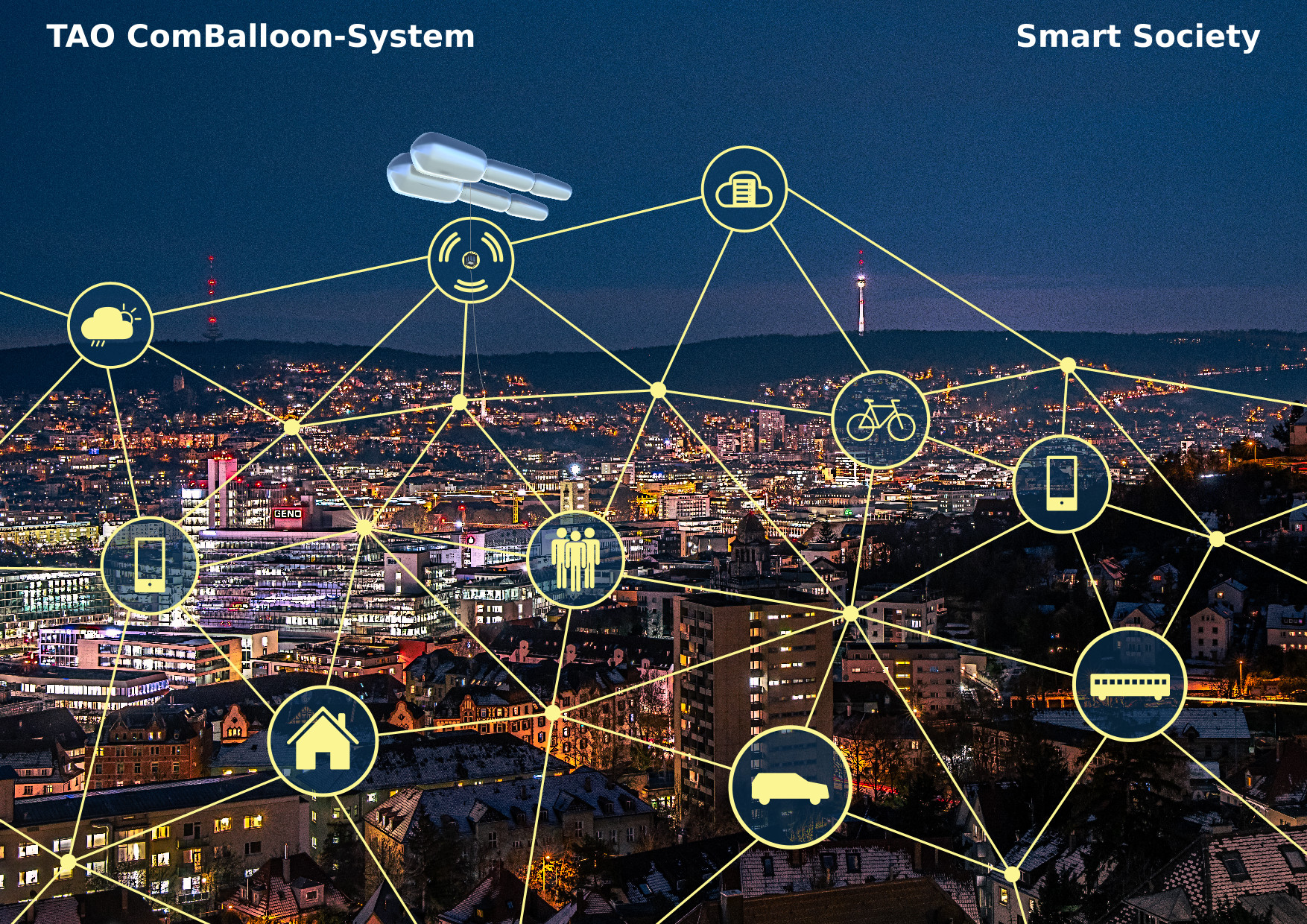
How the tethered ComBalloon System Works
The system consists of:
- A tethered aerostat with an aerodynamic design (helium-filled)
- A combined winch and anchoring system
- Payload (camera, sensors, WLAN etc. ...)
- Optional integrated umbilical fiber optic cable for high-performance data transmission
The ComBalloon can be operational within 15–30 minutes and can be deployed at altitudes between 10 and 800 m, depending on requirements. Power supply is via rechargeable batteries or a generator with solar options.
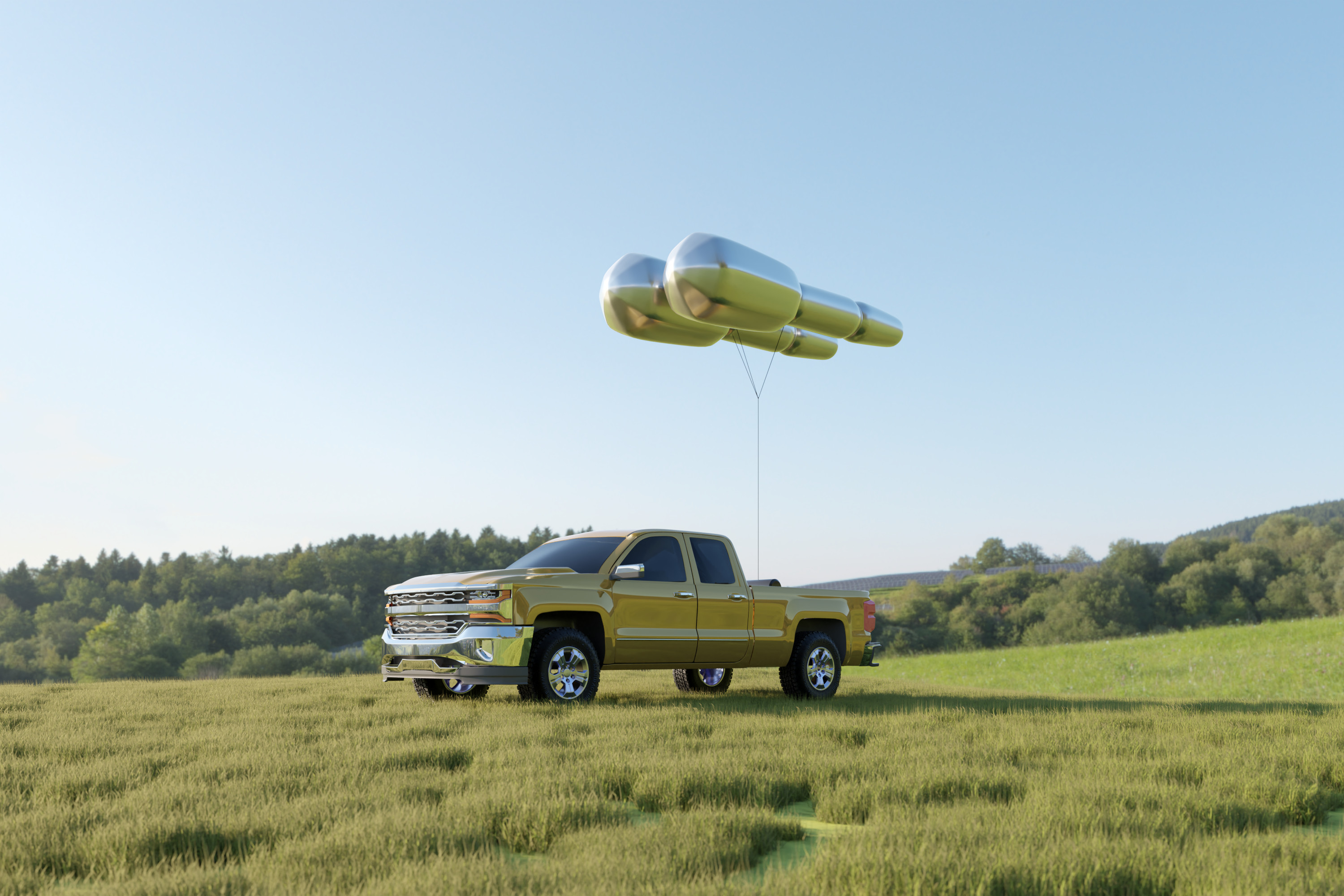
Key Advantages of the TAO ComBalloon: Mobile Aerostat for Data & Telecom
- Mobile “antenna mast” – quick to deploy, easy to transport
- No existing infrastructure needed – ideal for remote areas
- High flexibility – WLAN hotspot, telecom devices, radar, laser, cameras, sensors
- Cost-efficient & low-maintenance – recyclable materials
- Silent operation – perfect for surveillance and events
- Rapid deployment – ready in 15–30 minutes
- Platform versatility – operate from land, mobile vehicle, ship, or buoy
- Emergency-ready – provides communication when local infrastructure fails
- Communication to ground infrastructure, HAPS and satellites, depending on the application
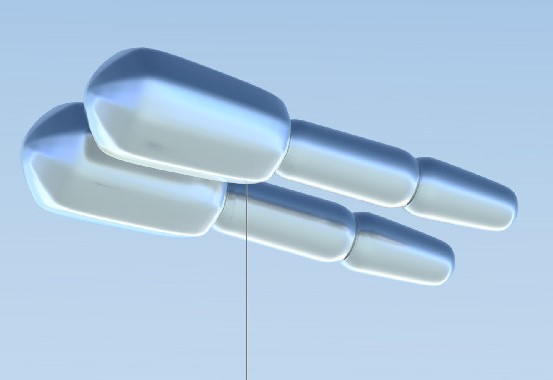

Applications
- Telecommunication & data transfer – network extension, last-mile connectivity in rural regions
- Security & surveillance – border control, harbour and industrial site monitoring
- Events & live broadcasting – flying WLAN hotspots, aerial footage for concerts & sports
- Research & environmental monitoring – weather observation, coastal protection, disaster monitoring, wildlife and environmental with integrated AI
- Disaster relief – emergency communication after earthquakes or network outages
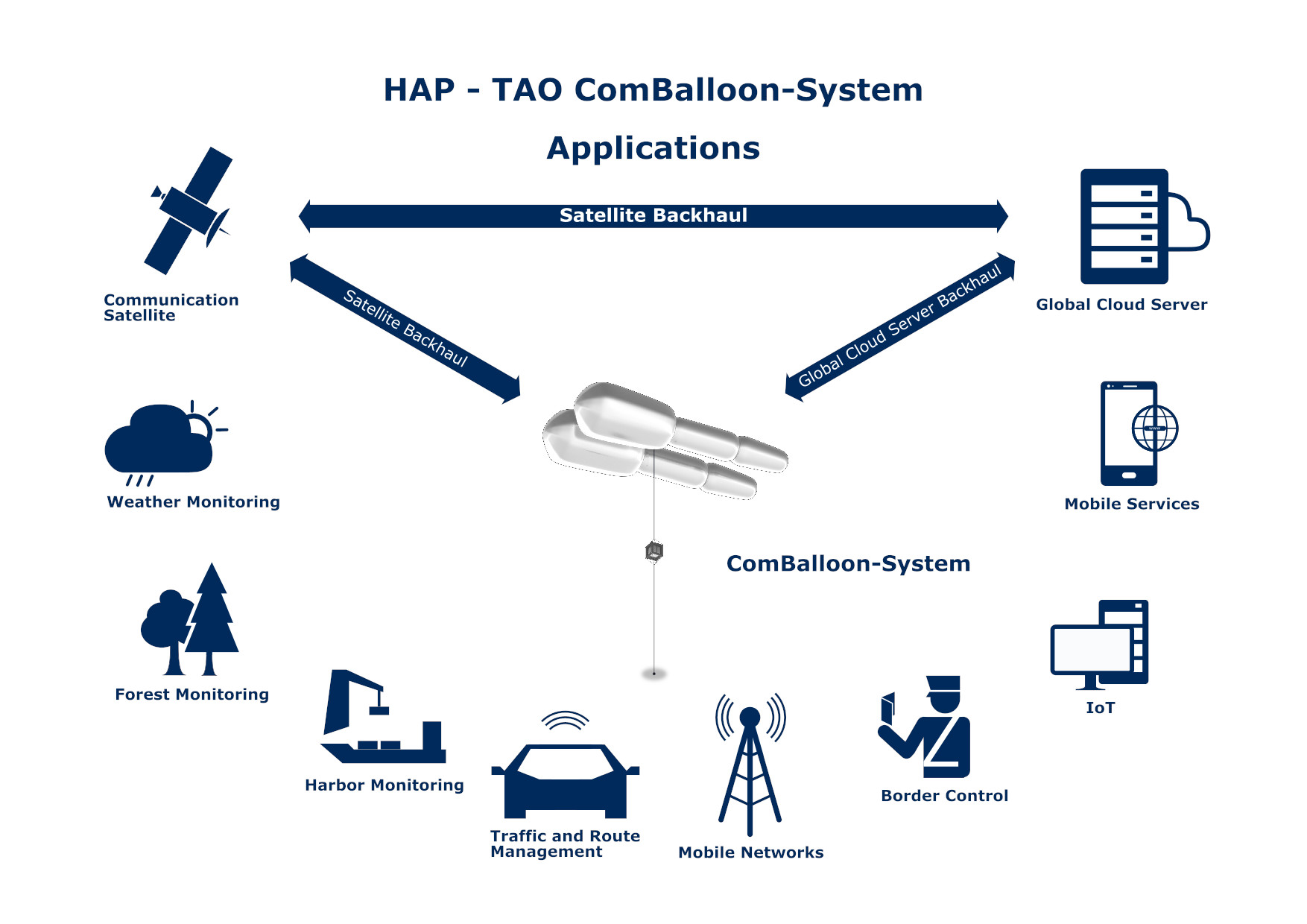
Technical Specifications (Example Configuration)
- Hull length
- ~8.2 m
- Diameter
- up to 3.5 m
- Payload capacity
- ~20 kg (depending on altitude)
- Flight altitude
- up to 800 m (tethered)
- Line-of-sight
- up to 100 km
- Setup time
- 15–30 minutes
- Power supply
- Batteries, generator, solar option
- Lifting gas
- Helium (non-flammable)
- Winch system
- Variable speed, mobile, fits pickup truck
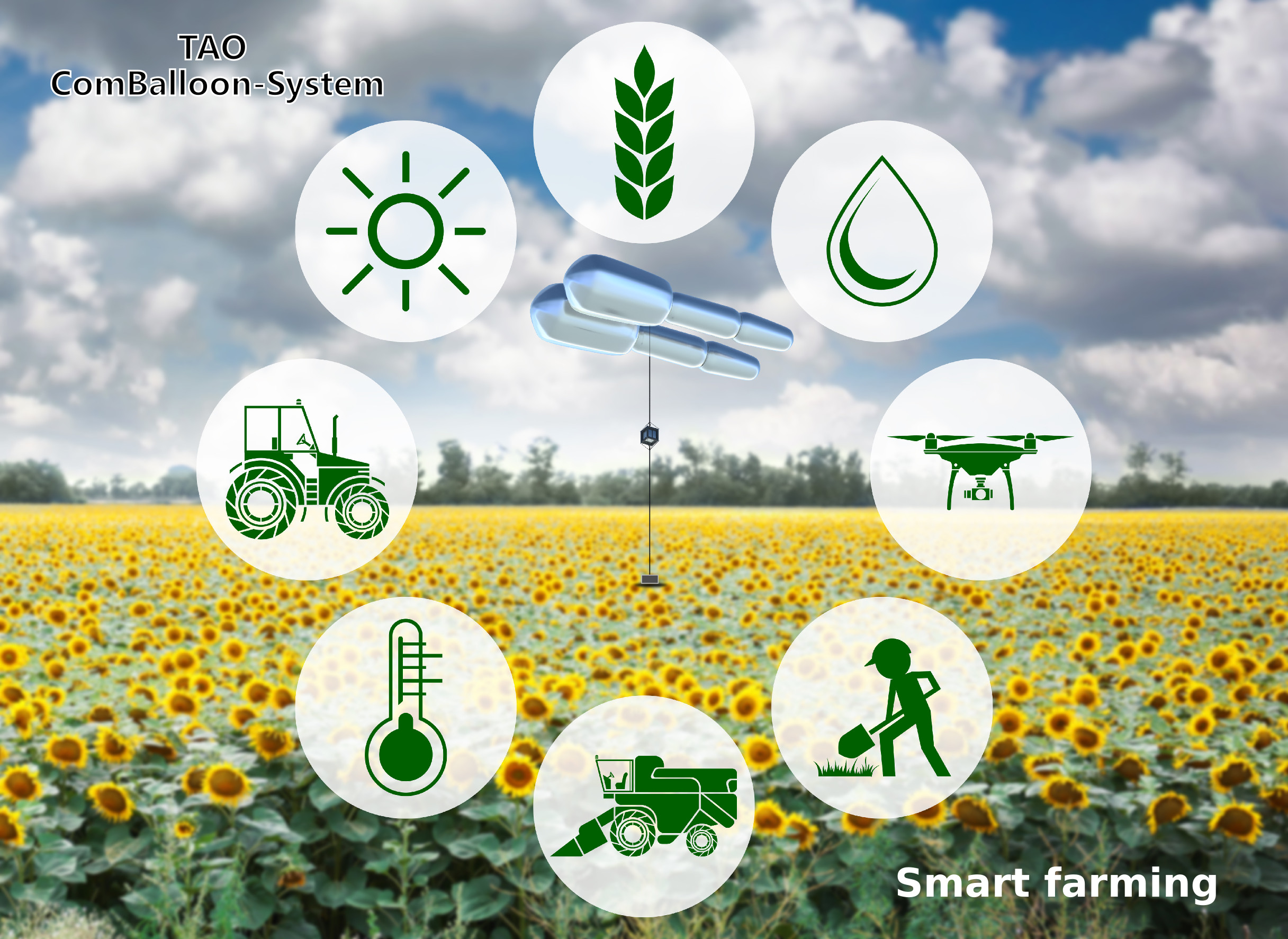
Custom-Built for Your Mission
Each TAO ComBalloon is tailored to your operational requirements:
- Desired coverage radius
- Payload weight and power requirements
- Preferred deployment platform (land, sea, stationary, mobile)
- Required wind tolerance
- Data transfer via fiber optic, wireless or satellite
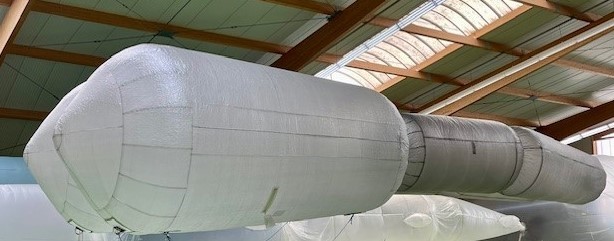
Regulatory Information
In Germany, tethered aerostats up to 30 m altitude require no aviation permit. Higher operations must be approved by relevant authorities. Regulations vary by country – we provide guidance and support for your specific region.
TAO ComBalloon – Flexible. Reliable. Ready Anytime.
Whether as a flying antenna, mobile hotspot, surveillance platform, or research tool – the TAO ComBalloon offers new possibilities for communication and data transfer.
Depending on the mission, TAO will develop a tailor-made ComBalloon system together with the payload partners (cameras, lasers, sensors, etc.).
Mobile aerostat system for telecom, WLANand surveillance: The TAO ComBalloon delivers up to 100 km range. Flexible, fast, cost-effective. Learn more!
Contact us today for expert consultation, technical details, and a custom proposal.
FAQ
1. How fast can the ComBalloon be deployed?
Depending on the system size, the TAO ComBalloon can be set up and fully operational within 15–30 minutes.
2. What range can the system cover?
At a flight altitude of 50 m, the line-of-sight range is up to 20 km. With longer tethers, ranges of up to 100 km are possible.
3. What payload can the ComBalloon carry?
Typically up to 20 kg, depending on altitude and weather conditions. Payloads include cameras, WLAN hotspots, telecom devices, or sensors.
4. Do I need a permit to operate the system?
In Germany, flights up to 30 m altitude do not require a permit. Higher operations must be approved by aviation authorities. Regulations vary by country.
5. In which situations is the ComBalloon most useful?
Typical applications include rural telecommunication, disaster response, border and coastal surveillance, event connectivity, and environmental monitoring.
6. What power supply does the system need?
The ComBalloon runs on rechargeable batteries; a generator can be used as an alternative. Optional solar panels can be integrated for power generation and battery charging (mission- and site-dependent).
7. Can the system operate in strong winds?
The system withstands wind speeds up to approx. 75 km/h (at 50 m altitude). For higher winds, the balloon can be safely retrieved and stored.
